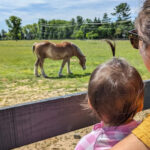Keep Your Child with Autism Engaged This Summer

FEATURED POSTS
January 12, 2026
Parents of special needs children worldwide are struggling with the prospect of engaging the minds and bodies of their children through the ongoing summer of Covid-19.
For children with autism, routines and predictability are critical, threatened by the inexplicable disruption of closed schools and camps, and curtailed social outlets. Although some families are utilizing in-person and virtual services, for many, professional support has declined dramatically or evaporated entirely while the needs of children with autism remain the same.
So what are things we can do to make best use of this time?
With summer weather there are more opportunities to engage children in a variety of indoor and outdoor activities that ignite their imaginations and keep their bodies moving. But first, it is important to speak with children about the current situation in a way that helps them understand why their world has been transformed. Social stories and comic book conversations can help explain current circumstances.
Maintaining a routine is vitally important for children with autism. Meal, nap and play times should remain sacrosanct even as the activities within play time vary. Keeping an autistic child engaged around the clock amid today’s restrictions is going to take some imagination; here is a framework to help, which also allows for maintaining social distancing:
Exploit the good weather and get outside
-
Camp in the backyard. Teach your child how to put up a tent, cook outside and have a sleepover in your backyard or living room.
-
Use colored chalk to draw on the sidewalk.
-
Paint your fence. Use water if it is not in need of a new coat.
-
Visit a local pond. Feed the ducks. Race paper boats.
-
Hike in the woods. Talk about the different trees, plants, and animals you see and hear.
-
Learn about geocaching and go in search of caches. Visit geocaching.com for information and download an app.
-
Blow bubbles
Employ learning activities disguised as fun
-
Develop a secret code and write a letter to a friend using it.
-
Cook or bake together. Teach your child about measuring and following directions.
-
Play school and make your child the teacher. Ask them to teach you something they have learned.
-
Pick a favorite animal and read about it online. Create a fact sheet and draw a picture of the animal.
-
Make healthy snacks together and talk about what makes them healthy.
Engage in tactile activities
-
Go to a playground and play in the sand, on the swing and on the see-saw (many playgrounds are re-opening now with specific procedures in place for social distancing and disinfection).
-
Make slime or modeling dough using online recipes.
-
Spread shaving cream on a cookie sheet and draw in it.
-
String macaroni or beads.
-
Finger paint. Ask your child to spell out words.
-
Build contraptions with Legos.
Explore the world online
-
Visit a zoo, aquarium or museum. They are easy to find online. Here is the Montreal Science Centre.
-
Visit an online learning site like Scholastic. There are literally dozens of them.
-
Visit five spectacular National Parks – Kenai Fjords in Alaska, Hawaii Volcanos, Carlsbad Caverns in New Mexico, Bryce Canyon in Utah and Dry Tortugas in Florida. Or take a trip to Mars.
-
Use a video conference platform to visit with a friend or therapist.
Be intentional about screen time and avoid using it as an anesthetic. An overload of screen time, including television, is associated with hyperactivity, difficulty sleeping and irritability.
Disruptions in the daily lives of children with autism caused by the novel coronavirus present significant challenges to parents. Innumerable resources exist online to keep children engaged physically and cognitively. For more ideas, visit https://www.autismspeaks.org/virtual-summer-activities.





